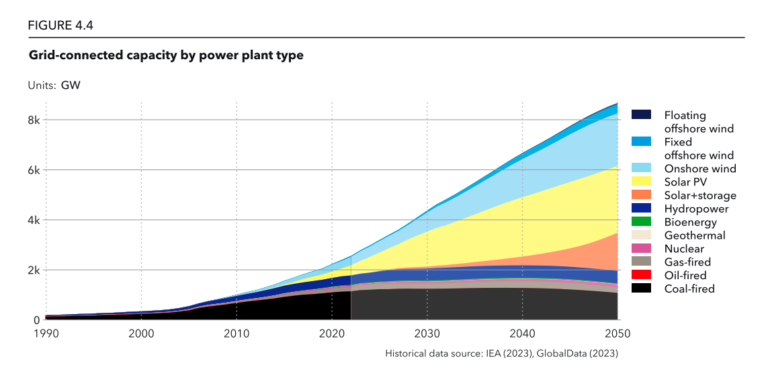DNV predicts that solar in China will account for 38% of the country’s electricity production by 2050, up from 5% today, with more than a third of solar capacity combining with storage by mid-century.
China is expected to reach 5.5 TW of solar energy by 2050, according to predictions by Norwegian risk assessment specialist DNV in its latest report: “Energy transition prospects China 2024.”
The figure includes 3.9 TW of solar and 1.6 TW of solar plus storage. DNV said growth will be driven by the low cost of solar energy and continued policy support.
China’s total grid-connected installed capacity is expected to reach 6.7 TW in 2040 and 8.7 TW in 2050. Renewables will have an 88% market share by 2050, with the country expected to more than fivefold its renewable energy installations from today. By 2050, solar energy is expected to be responsible for 38% of all electricity produced in China, about 14 times more than current levels.
The analysts predict that solar energy will continue to lead renewable energy development annually for the rest of this decade and beyond, with more than 100 GW of additional PV added each year through 2039. DNV said that until 2040, solar plus storage solutions are likely to become the technology of choice, with annual installations of around 110 GW. It says it expects that by 2050, 34% of China’s solar energy will be combined with storage applications – mainly batteries.
According to the report, the levelized cost of electricity (LCOE) for solar is currently approximately $39/MWh, but is almost twice as high for solar plus storage at $75/MWh. By 2050, DNW expects LCOE to be as low as $24/MWh for solar and $44/MWh for solar plus storage, due to technological innovation and lower capital costs.
“As more and more solar energy enters the energy system, the price cannibalizing effect becomes apparent and the price that solar energy yields begins to decline,” the report said. “Over time, solar plus storage becomes a profitable option for developers, which is also reflected in the increasing net capacity additions of solar plus storage, in absolute numbers and compared to solar PV.”
The continued growth of solar energy will be accompanied by a corresponding decline in fossil fuel generation, which is expected to fall from 66% today to 7% by 2050. Other non-fossil sources, including wind energy, will provide almost 55% of responsible for energy production. energy mix.
“In other words, by 2050 we expect a substantial transformation of China’s energy mix from one dominated by fossil fuels to one that is much cleaner,” DNV said.
Earlier this week, China’s National Energy Administration (NEA) said the country’s cumulative PV capacity has exceeded 660 GW, with more than 47 GW of solar power added in the first three months of this year.
This content is copyrighted and may not be reused. If you would like to collaborate with us and reuse some of our content, please contact: editors@pv-magazine.com.


